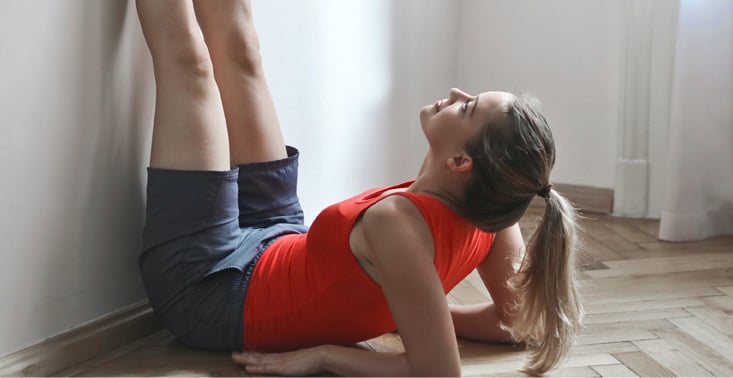With gym closures and isolating at home, it may be tempting to curl up on the couch and binge-watch a new show (a show about tigers?), maybe with a bag of chips in hand. And, there’s nothing wrong with that! But if it stays this way for days on end, it is something to take note of. Staying active is important for your overall health. In addition to the obvious benefits of weight control and fitness, exercise has been shown to boost self-esteem and reduce anxiety and depression.
So, while the world may feel out of your control right now, you can take control of your health by making exercise a part of your daily routine – even when you’re at home. We’ve compiled a few tips to help you get started.
1. Build a new daily routine.
Research shows that setting daily routines is good for our mental health. A study published in Lancet Psychiatry found that people who have an active daily routine had healthier sleep, which in turn, is associated with better mental health. In contrast, those who had less activity during the day had a lower sense of well-being and brain functioning. So, do your best to get up at the same time every day, and work out at the same time every day. Having a structured workout routine makes it more likely you’ll stick to it.
2. Adapt, and get creative.
Without our usual exercise “toolkit,” we need to adapt and find new tools. Get creative with what you have at home and have some fun with it! A full jug of bleach is an excellent dumbbell replacement to do squats. Or, fill up a bag with some books and hold it as you walk up and down the stairs. The list goes on.
3. Seek online resources.
With all of us in the same boat, there are a bevy of free online resources to suit just about any type of activity. Many personal trainers have moved their platforms online, offering group classes or one-on-one virtual training. YouTube is another excellent source of at-home exercise ideas that you can watch and re-watch as you learn new techniques.
4. Motivate each other.
It can be hard to stay motivated without that friend you’d do a class with, or gym buddy you’d see every day. Try scheduling an “active video call” with a friend or two. It could be a workout you’ve all agreed to doing, or a walk outdoors. Scheduling activity with friends keeps you accountable and motivated.
5. Make it a family affair.
If you have a partner and kids at home, get everyone involved! Keeping kids active is equally important. Get inspired online for some fun, simple group activities based on their age and ability
6. Make your health a priority.
By getting a bit creative, it is possible to build a challenging exercise routine at home. Change it up over time to stay motivated and interested. Maybe it’s a long walk this week, and yoga the next. What’s key is sticking to it – and keeping your health a top priority during this time.




